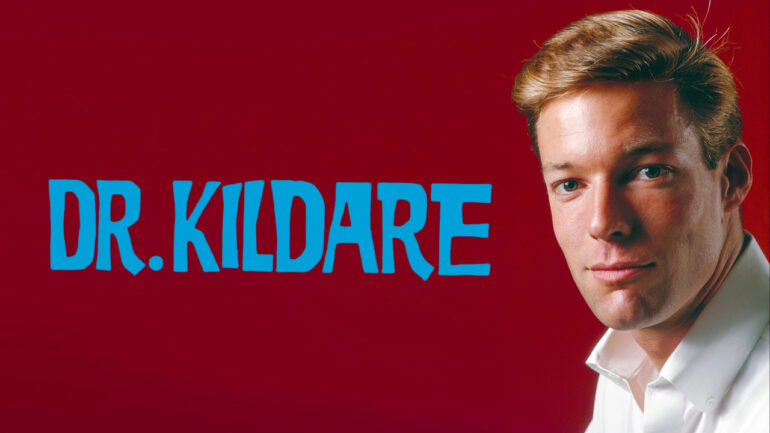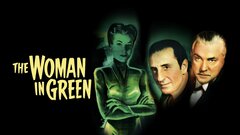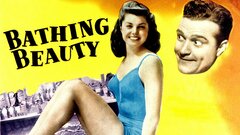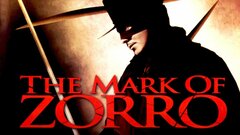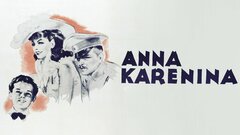Tall and lean, with an interesting, angular face and a remarkable authoritative voice that lent considerably gravity to the most poetic of sentiments and the vilest of evil, Basil Rathbone's ability to excel at heroism and villainy kept him in demand for much of his career. The South African native had his start on the stage and thanks to acclaim from Broadway work like "The Swan" (1923-24), he soon graduated to motion pictures. He was an excellent choice to play period villains in films like "David Copperfield" (1935), "Captain Blood" (1935), and "The Adventures of Robin Hood" (1938), and Rathbone proved so effective, typecasting seemed inevitable. However, he staved off such a career fate with his indelible portrayal of Sir Arthur Conan Doyle's master of deduction, Sherlock Holmes.
From "The Hound of the Baskervilles" (1939) through "Dressed to Kill" (1946) and seven seasons on radio, Rathbone did a superb job of communicating Holmes' unmatchable intelligence and sleuthing mastery. Rathbone eventually tired of the role and returned to the stage, which offered him a richer venue for his talents than acting as foils for comedians like Bob Hope and Danny Kaye and the rote villainy of low-budget horrors like "The Black Sleep" (1956).
At the height of his craft, Rathbone performed with a degree of vividness and sincerity that was a hallmark of the finest classically-trained actors and his interpretation of Holmes was considered the definitive take on the literary icon.
The eldest of three children, Philip St. John Basil Rathbone was born on June 13, 1892 in Johannesburg, South Africa, but spent his formative years in England after the Rathbone family fled there during the Boer War. Acting was a passion he developed early in life, but Rathbone did not actively pursue it as a career until his late teens, when he finished his studies at Repton School and joined a repertory company run by his cousin, the esteemed Frank Benson.
He gained experience through a steady schedule of theatre work and developed a reputation as a talented performer with an excellent capacity for the demands of Shakespearean drama. However, in the spring of 1916, he did his part for King and Country by enlisting in the British Army. Rathbone saw action in France the following year and received the Military Cross for the bravery he displayed on some especially dangerous daytime scouting missions.
Upon returning home, Rathbone resumed performing, but had to deal with personal issues when his first marriage ended in divorce. He made his movie debut in the British silent feature "Innocent" (1921) and within a year, was off to New York City for stage assignments, including a Broadway bow in "The Czarina" (1922).
Shortly thereafter, the comedy "Trouping with Ellen" served as his American cinema debut, while Rathbone's superb performance on the New York stage in "The Swan" (1923-24) effectively established his acting credentials with the local theatre community and critics. In 1926, he wed his second wife, Spanish born actress Ouida Bergère. The couple proved to be an ideal match and they were together for decades.
Further engagements followed on Broadway as Cassius in "Julius Caesar" (1927) and the titular role in "Judas" (1929), which Rathbone also co-wrote. While he had been effectively utilized in some silent movies, the dawn of the talkies found Rathbone working constantly in the medium, including a turn as celebrated detective Philo Vance in "The Bishop Murder Case" (1930).
He also had another opportunity to demonstrate his gift for the Bard as star of "Romeo and Juliet" (1934-35), a successful Broadway revival. Rathbone's aptitude for performing in adaptations of classic material was also very much in evidence via his portrayal of the heartless Mr. Murdstone in "David Copperfield" (1935), MGM's all-star version of the Dickens classic. The studio subsequently cast him in Dickens' "A Tale of Two Cities" (1935) and as Karenin in "Anna Karenina" (1935), and he made for a fine villain opposing Errol Flynn as the heroic "Captain Blood" (1935), a part that engendered in Rathbone a love of fencing.
The lavish spectacle "The Last Days of Pompeii" (1935) also found Rathbone giving a memorably flamboyant performance as the notorious Roman governor Pontius Pilate. Although he had just played Romeo on Broadway, Rathbone was assigned the role of Tybalt when it came time for George Cukor's movie version of "Romeo and Juliet" (1936) and it brought him his first Academy Award nomination for Best Supporting Actor. A second nomination followed for his performance as King Louis XI in "If I Were King" (1938).
Rathbone also essayed one of the most famous characters of his career that year: villainous Sir Guy of Gisbourne in "The Adventures of Robin Hood" (1938), an instant classic beloved by people of all ages for decades after its release. Lensed in absolutely stunning three-strip Technicolor, the widely beloved adventure tale delivered many witty and exciting highlights, including another invigorating swordplay duel pitting Rathbone - as the main henchman of villainous Prince John (Claude Rains) - against star Errol Flynn, a la their earlier encounter in "Captain Blood." With his indelible performances in films of this ilk, Rathbone seemed set to play a steady stream of upper-class miscreants for the rest of his career.
However, within a year, he was cast as a very different sort of character that led to a new level of fame and a permanent place for Rathbone in popular culture. At the beginning of 1939, Rathbone replaced Colin Clive as the mad doctor in residence for "Son of Frankenstein" (1939), the third entry in Universal's popular horror series. However, he also became the new incarnation of master sleuth Sherlock Holmes. With fellow Englishman Nigel Bruce in support as Dr. Watson, Rathbone gave the first of many performances as Holmes in an accomplished adaptation of Sir Arthur Conan Doyle's "The Hound of the Baskervilles" (1939).
Although several Holmes shorts and features had been produced over the years, none of the previous productions had so perfectly captured the rapport and camaraderie displayed by the team at the heart of this new incarnation. Rathbone's commanding performance made it very easy to forget any of the earlier attempts at the role and it quite understandably became the actor's most famous and enduring character outside of Sir Guy of Gisbourne.
"The Hound of the Baskervilles" was enough of a ticket seller to be followed a few months later by "The Adventures of Sherlock Holmes" (1939) and a like-named radio series with Rathbone and Bruce on NBC, which was a consistent success, running for seven years. However, in spite of all this renewed interest in Holmes, 20th Century Fox - which had already enjoyed considerable success with two concurrent mystery series centered around Charlie Chan and Mr. Moto - felt the grosses for the second film were disappointing and passed on producing any further Holmes features.
Movie offers continued to come for Rathbone, however, and he appeared in the mildly horrific historical drama "Tower of London" (1939) and crossed swords with Tyrone Power in the popular swashbuckler "The Mark of Zorro" (1940). However, Rathbone donned Sherlock's deerstalker once again in 1943, when Universal Pictures acquired the rights to the character and moved him and Dr. Watson into the present day.
Thus, over the course of 12 economical but diverting entries, the previously Victorian era detective occasionally found himself matching wits with Nazis and doing his part for the Allied War Effort. The new batch of Holmes pictures occupied most of Rathbone's time and by 1946, he felt it was time for him to move on to other projects.
Both the movie and radio series came to an end, and after a lengthy absence from live performing, Rathbone pledged to devote the lion's share of his time to the theatre. He set foot on Broadway again in "Obsession" (1946) and a revival of "The Heiress" (1947-48) followed, for which he received a Tony nomination. Rathbone spent much of 1950 on the Great White Way in another staging of "The Heiress" (1950), as well as turns in "Julius Caesar" (1950) and "The Gioconda Smile" (1950). He also briefly returned to the world of Sherlock Holmes in 1953 as the star of a like-named play about the great investigator, written by his wife, Ouida.
A steady stream of work also came via dramatic anthology TV programs like "Lux Video Theatre" (CBS/NBC, 1950-57) and "Suspense" (CBS, 1949-1954), with the latter providing the chance for him to play Holmes one final time. Colorful supporting engagements came in the big studio comedies "Casanova's Big Night" (1954), "We're No Angels" (1955) and "The Court Jester" (1956), but Rathbone also found himself in low-budget, mad scientist mode opposite fellow horror vets John Carradine, Lon Chaney Jr. and Bela Lugosi in the oddball lower-tier thriller "The Black Sleep" (1956).
Rathbone and Carradine resumed their villainy in the decidedly more upscale John Ford picture "The Last Hurrah" (1958), while Rathbone enjoyed a final Broadway engagement as a replacement for Raymond Massey in "J.B." (1958-59). The following year, he was honored with three stars on the Hollywood Walk of Fame covering his film, television and radio work, and he published his autobiography, In and Out of Character, in 1962.
Now in his seventies, Rathbone continued to be active, but quality assignments became few and far between. He headed to Italy for "Pontius Pilate" (1962), but while Rathbone had famously played the role in "The Last Days of Pompeii," he was relegated to the secondary role of Caiaphus. However, he devoured the scenery with relish in "The Magic Sword" (1962) as an evil magician not above feeding princesses to fire-breathing dragons.
The success American International enjoyed with "The House of Usher" (1960) launched a series of Edgar Allan Poe adaptations and Rathbone was engaged to appear as an evil mesmerist in one of the stories that made up the Poe anthology "Tales of Terror" (1962). AIP also teamed him up with Vincent Price, Boris Karloff and Peter Lorre for the ghoulish farce "The Comedy of Terrors" (1963). The humor was broad and rarely original, but Rathbone enjoyed a number of inspired moments as an evil landlord with catalepsy who spouts "Macbeth" quotations.
Outside of a handful of guest star engagements on programs like "Dr. Kildare" (NBC, 1961-66) and a tour in his own one-man show, Rathbone had to settle for the likes of "Voyage to the Prehistoric Planet" (1965) and "Queen of Blood" (1966) by mid-decade. However, even more demeaning jobs were ahead in "The Ghost in the Invisible Bikini" (1966) and the woebegone horror hoedown "Hillbillys in a Haunted House" (1967).
He also travelled to Mexico City with fellow Golden Agers John Carradine and Cameron Mitchell for the local comedy "Autopsia de un Fantasma" ("Autopsy of a Ghost") (1968), in which all three were dubbed into Spanish by other performers.
Even sillier than "Hillbillys," the picture did offer a certain amount of surreal fun, but was hardly a dignified outing for anyone involved. Alas, "Autopsia de un Fantasma" turned out to be Rathbone's last film as the 75-year-old actor suffered a fatal heart attack in his study on July 21, 1967. He was survived by Bergère, his wife for more than 40 years, a son and a daughter.
By John Charles













